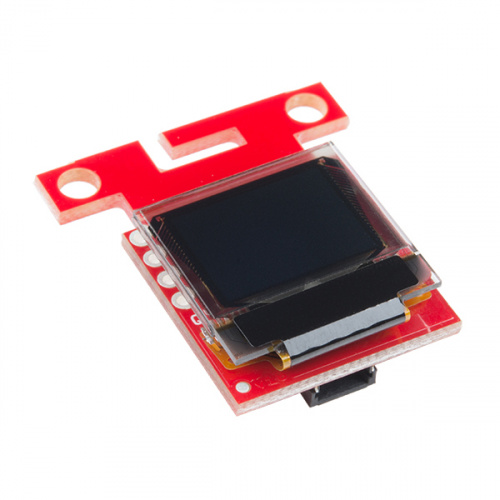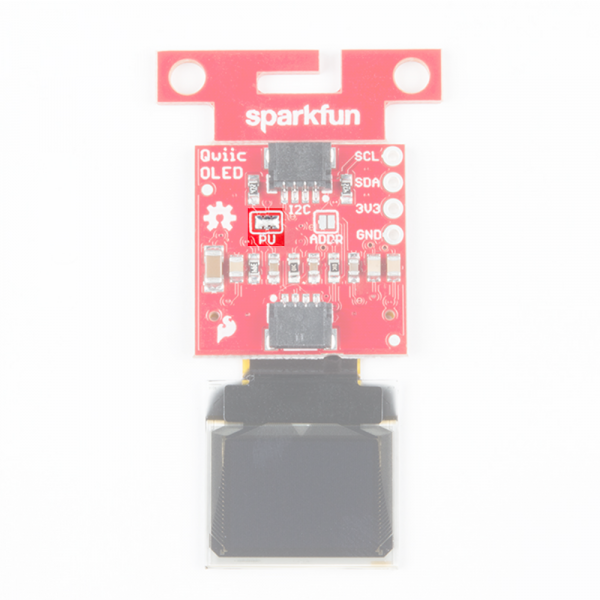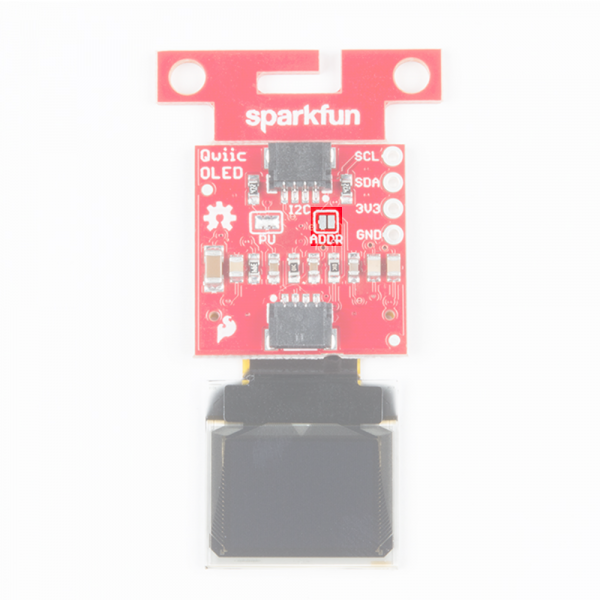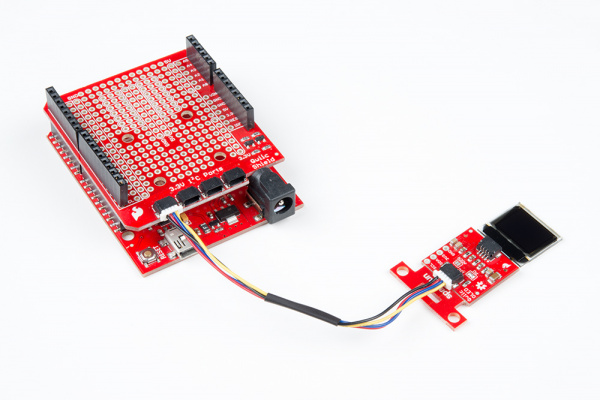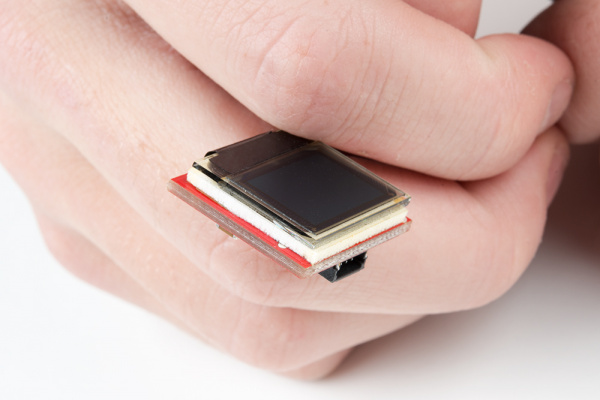Micro OLED Setup
Introduction
The Qwiic Micro OLED is a Qwiic enabled version of our micro OLED display! This small monochrome, blue-on-black OLED display displays incredibly clear images
This hookup guide will show you how to get started drawing objects and characters on your OLED.
Required Materials
To get started, you'll need a microcontroller to, well, control everything.
- SparkFun RedBoard - Programmed with Arduino
- SparkFun Thing Plus - Artemis
- SparkFun Thing Plus - ESP32 WROOM
- SparkFun Thing Plus - SAMD51
- Raspberry Pi 4 Model B (2 GB)
If the controller you choose doesn't have a built in Qwiic connector, one of the following Qwiic shields that matches your preference of microcontroller is needed:
- SparkFun Qwiic Shield for Arduino
- SparkFun Qwiic Shield for Teensy
- SparkFun Qwiic Shield for Arduino Nano
- SparkFun Qwiic SHIM for Raspberry Pi
You will also need a Qwiic cable to connect the shield to your OLED, choose a length that suits your needs.
- Flexible Qwiic Cable - 100mm
- Flexible Qwiic Cable - 500mm
- Flexible Qwiic Cable - 50mm
- Flexible Qwiic Cable - 200mm
Suggested Reading
If you aren't familiar with the Qwiic system, we recommend reading here for an overview.
 |
| Qwiic Connect System |
We would also recommend taking a look at the following tutorials if you aren't familiar with them.
Hardware Overview
Listed below are some of the operating ranges and characteristics of the Qwiic Micro OLED.
| Characteristic | Range |
|---|---|
| Voltage | 3.3V |
| Temperature | -40°C to 85°C |
| I2C Address | 0X3D (Default) or 0X3C (Closed Jumper) |
Pins
| Pin | Description | Direction |
|---|---|---|
| GND | Ground | In |
| 3.3V | Power | In |
| SDA | Data | In |
| SCL | Clock | In |
Optional Features
There are several jumpers on board that can be changed to facilitate several different functions. The first of which is the I2C pull-up jumper, highlighted below. If multiple boards are connected to the I2C bus, the equivalent resistance goes down, increasing your pull up strength. If multiple boards are connected on the same bus, make sure only one board has the pull-up resistors connected.
The ADDR jumper (highlighted below) can be used to change the I2C address of the board. The default jumper is open by default, pulling the address pin high and giving us an I2C address of 0X3D. Closing this jumper will ground the address pin, giving us an I2C address of 0X3C.
Hardware Assembly
If you haven't yet assembled your Qwiic Shield, now would be the time to head on over to that tutorial. With the shield assembled, Sparkfun's new Qwiic environment means that connecting the screen could not be easier. Just plug one end of the Qwiic cable into the OLED display, the other into the Qwiic Shield and you'll be ready to start displaying images on your little display.
The OLED screen itself is loosely attached to the breakout board initially, so be careful handling it! You can either use your own enclosure for the OLED display, or you can use some double sided foam tape for a less permanent solution.
Software
The SparkFun Micro OLED Breakout (Qwiic) uses the SparkFun QWIIC OLED Arduino Library. The SparkFun Qwiic OLED library Getting Started guide has library setup instructions and usage examples. Additionally, the full library API documentation is available in the SparkFun Qwiic OLED Library API Reference guide.
Resources and Going Further
Now that you've successfully got your OLED displaying things, it's time to incorporate it into your own project!
For more on the Qwiic Micro OLED, check out the links below:
